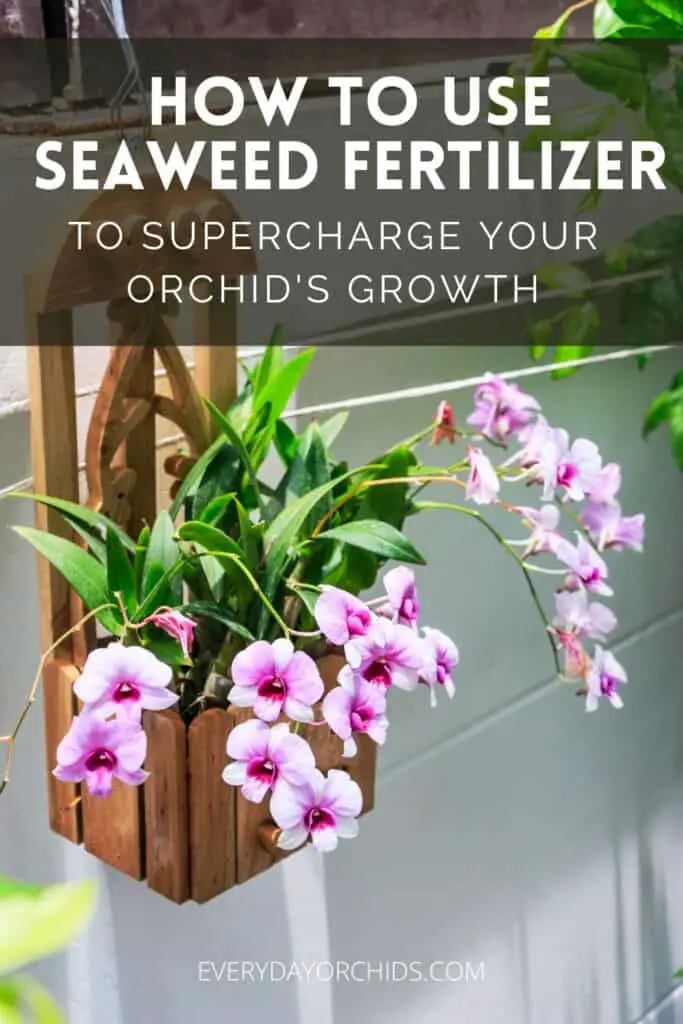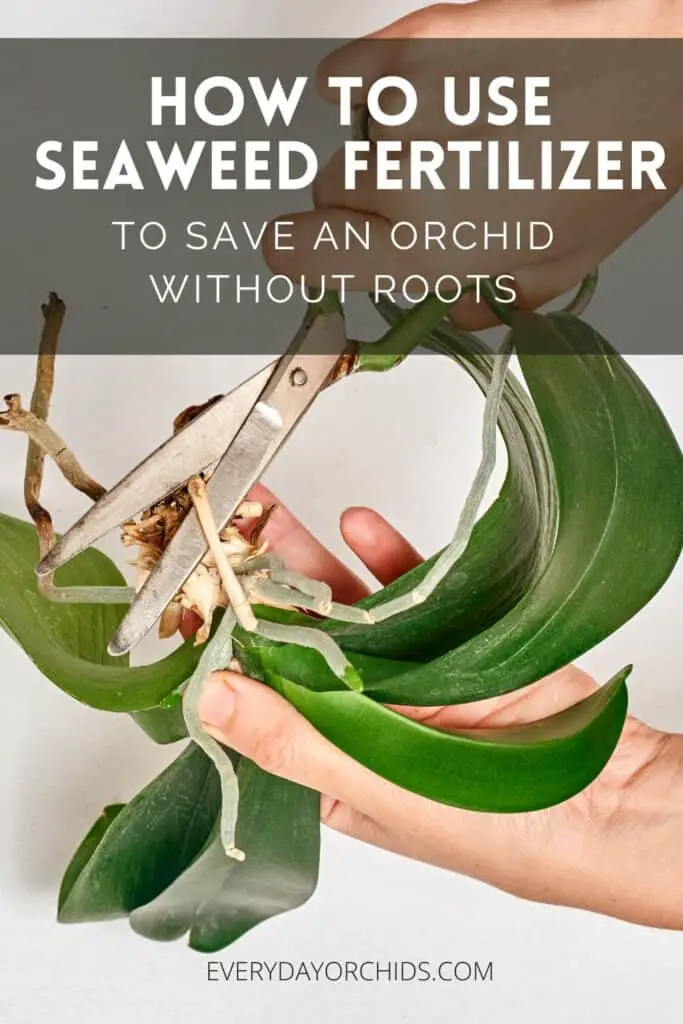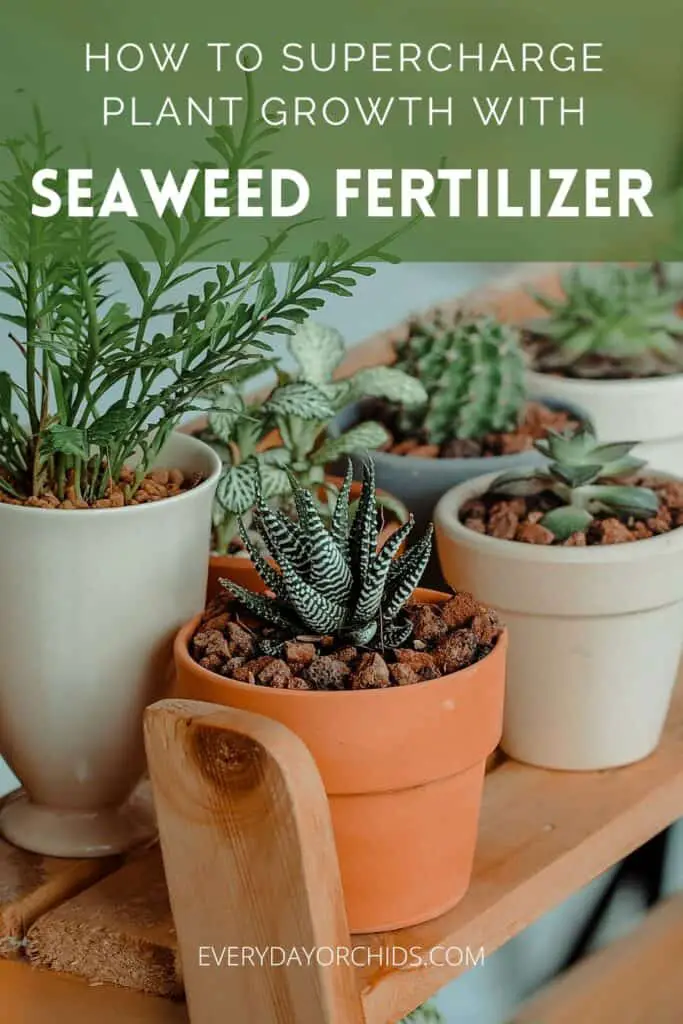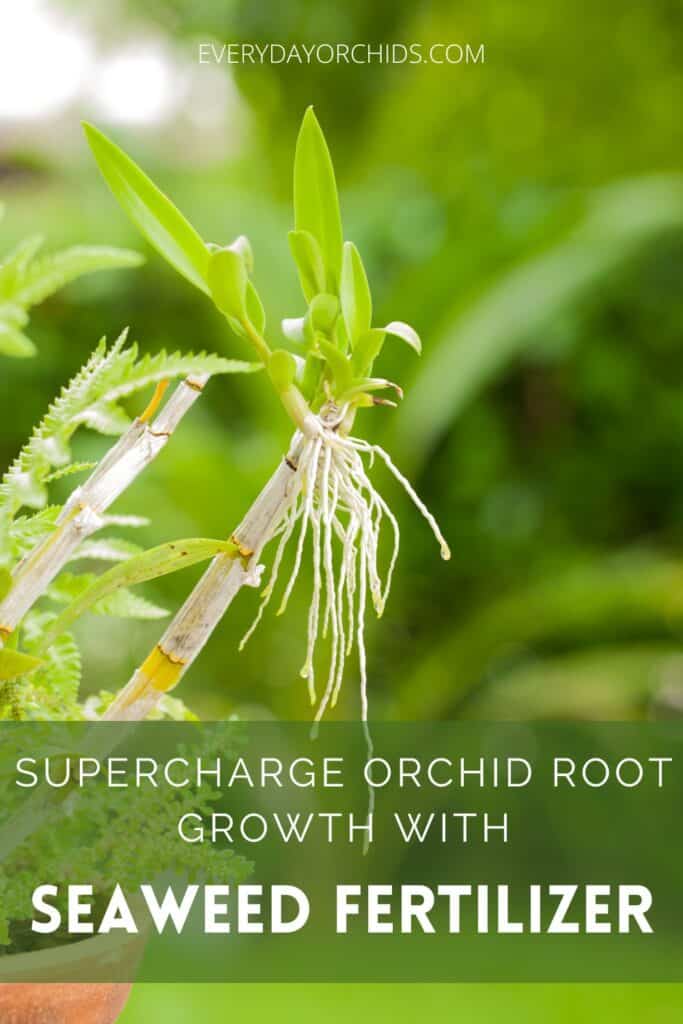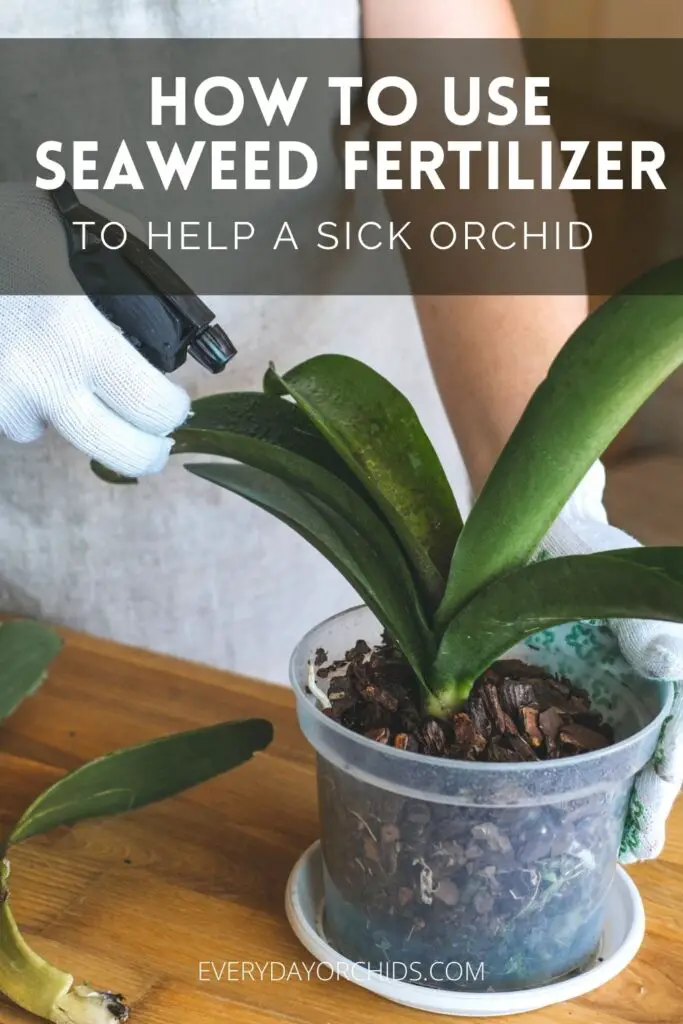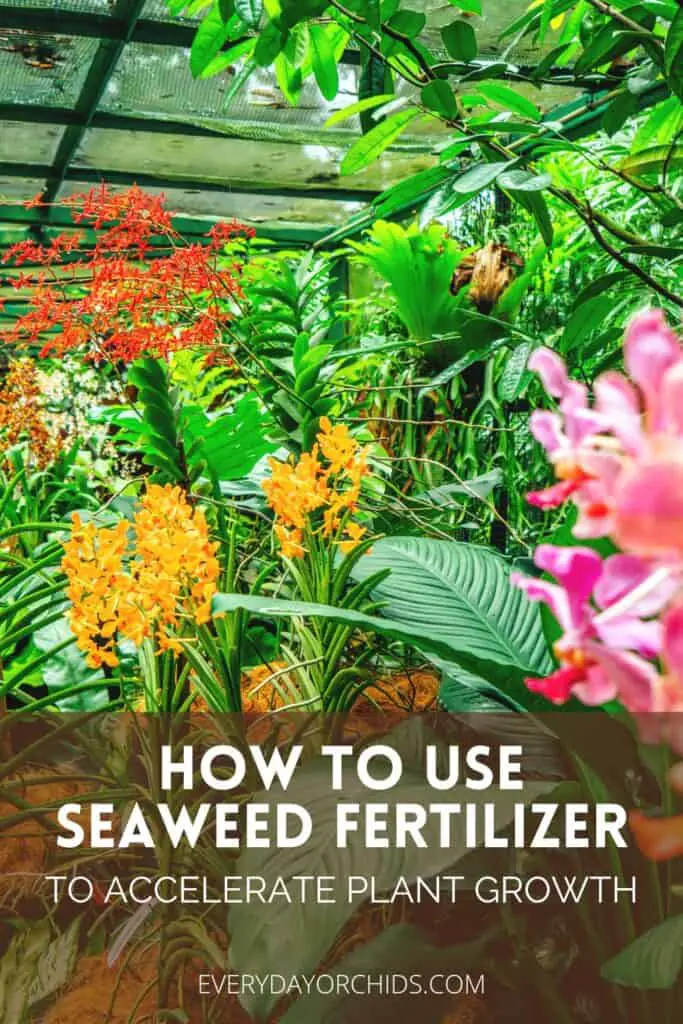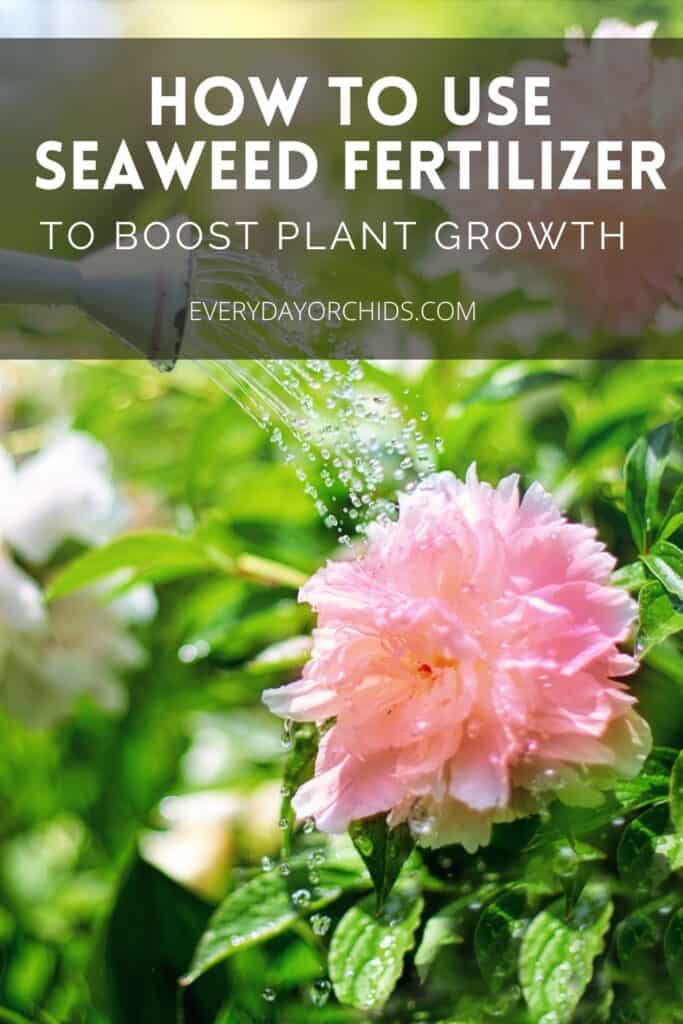Seaweed fertilizer and kelp fertilizer are additives, meaning you can use these on your plants in addition to your regular NPK fertilizer. Does this take the place of fertilizer? No. Think of it as a vitamin supplement that you would give your orchids and other plants in addition to their regular fertilizer.
To use seaweed or kelp fertilizer on your plants, you’ll need to prepare it according to the package instructions. From there, you can apply it as a foliar spray or combine it with your regular NPK fertilizer and use when feeding your plants.
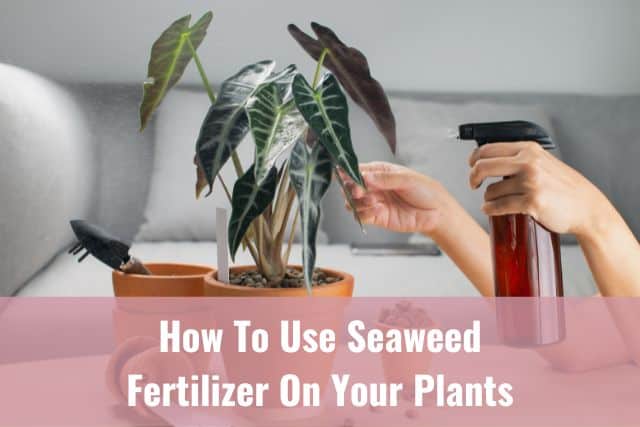
In this article, I’ll go into more detail about the basics of using seaweed fertilizers on your plants. Namely, I’ll talk about how to prepare and apply these additives, as well as how often. You’ll also learn the benefits of using seaweed or kelp fertilizer when repotting orchids, plus how to use seaweed fertilizer to nurse sick orchids back to health. Keep reading to learn more!
Please note that these links are affiliate links and as an Amazon Associate, I earn from qualifying purchases. Purchases made through affiliate links in this post may generate commissions at no additional cost to you. Use this link for a discounted Amazon Prime trial. Thank you for your support!
Table of Contents
Preparing Seaweed Or Kelp Fertilizer
Each product will have it’s own manufacturer instructions for diluting and preparing the product. Follow the label instructions.
Remember that the dilution instructions are ratios and can be adjusted to your needs. For example, if the instructions call for 1 Tablespoon fertilizer to be diluted in 1 gallon of water, and you don’t need that much, you can halve it to 1/2 Tablespoon per 1/2 gallon of water.
Three Ways To Use Seaweed Or Kelp Fertilizer On Plants
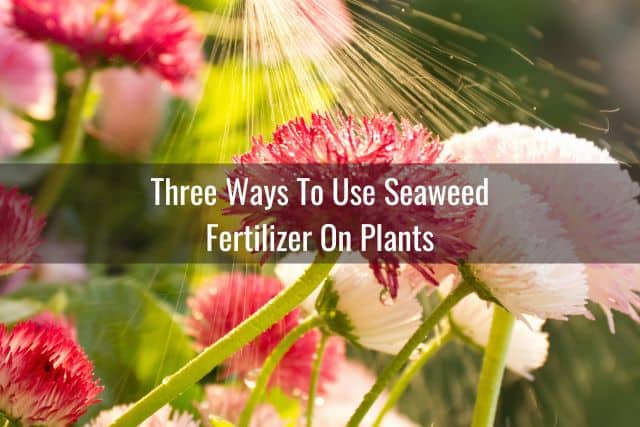
There are a few ways you can apply seaweed or kelp fertilizer to your plants. One, you can feed your orchids by soaking the orchid pots in the fertilizer mixture. Alternatively, you can use the seaweed fertilizer as a foliar spray or use it to water your plants.
Note: Since this is an orchid site, I’ll be talking specifically about how you can use seaweed or kelp fertilizer on your orchids. However, the principles and techniques used for orchids can also be applied to your other houseplants and outdoor plants.
By the way, I’ve written extensively about the top five benefits using seaweed fertilizer will have on your orchids and other plants. Please check out that article on Everyday Orchids to learn more about the wonders of seaweed fertilizer!
Foliar Feeding
To use it as a foliar spray, pour some of the seaweed or kelp fertilizer into a spray bottle equipped with a fine mist spray nozzle. Liberally spray the undersides of the orchid leaves.
Do this in the morning so that excess moisture will have a chance to dry out before nighttime. Foliar feeding would work great for orchids such as Cattleyas, Phalaenopsis, and Vandas.
To learn more, read this article about how to feed orchids with a fertilizer mist spray.
Soak The Orchid Pots
To use it as a soak, simply combine the prepared seaweed or kelp fertilizer solution with your prepared NPK orchid fertilizer. Mix well. Use this orchid/seaweed fertilizer solution to feed your plants.
I prefer to pour the fertilizer mixture into a small basin or container, then let my orchid pots soak in the solution for at least 5-10 minutes. This is similar to how I would water orchids, with or without fertilizer. This allows the roots to absorb as much water and nutrients as possible.
Then, I remove the pots from the basin and let the excess water run out. I also do this early in the morning to allow excess moisture to evaporate by nightfall.
Water The Orchids Without Soaking
If you prefer to let the water run through your orchid pots, you can do that as well. Simply pour the fertilizer solution over the orchid roots and potting media, allowing the water to run through.
Again, you’ll want to do this early in the morning to give your orchids a chance to dry out before nightfall.
How Often To Use Seaweed or Kelp Fertilizers
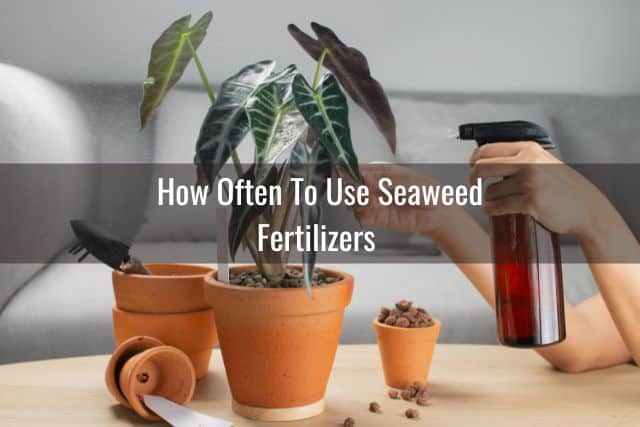
Some orchid growers use this every other week on their orchids, while others feed their orchids with it monthly. Either is fine, but I would recommend not using seaweed fertilizer weekly.
When using seaweed and kelp fertilizers on your plants, it is best to use these as occasional supplements to your regular feedings.
Use seaweed or kelp fertilizer either every other feeding or just once a month, because it contains growth hormones.
Spacing out your use of this supplemental fertilizer is key. The reason is, excessive growth hormones can, over time, weaken the plant as it grows too quickly. This ends up causing other problems, which I’ll go over in more detail later.
In addition, there is the risk that overexposure to growth hormones causes the orchid to build tolerance. Over time, you may see less of an effect of feeding your orchid with seaweed or kelp fertilizer.
All that to say, you’ll be better off adding seaweed or kelp fertilizer into your rotation of orchid food and supplements, but avoid using it on a too frequent, weekly basis.
On the weeks you are not using it, simply feed your orchid with orchid fertilizer as usual or flush the pot out with plain water.
Sample Schedule During Growth Season
- Week 1: Feed orchids with a mixture of seaweed fertilizer and diluted orchid fertilizer.
- Week 2: Feed orchids with diluted orchid fertilizer only.
- Week 3: Feed orchids with a mixture of seaweed fertilizer and diluted orchid fertilizer.
- Week 4: Skip feeding the orchids with anything this week. Instead, flush the orchid pot with plain water to rinse out any accumulated fertilizer salts.
Alternatively, if you want to just use seaweed fertilizers once a month, you can apply it only on week 1 along with the diluted orchid fertilizer. This might be a good compromise if you want to just try this out or if you have a smaller orchid plant.
To learn more, read this guide on how to fertilize orchids.
Rest Periods And Blooming Season
If you have an orchid that requires a rest period during the winter, such as a Dendrobium Nobile orchid, stop using the seaweed fertilizer during this time. During the rest period, you’ll want to refrain from fertilizing and watering your orchid.
In addition, some orchid growers stop using seaweed fertilizer when the orchids are forming flower spikes. This is in order to allow the orchid to focus on producing flowers and flower spikes, rather than roots and leaves.
Once the flowers fall off and the orchid has finished it’s blooming season, you can reintroduce seaweed fertilizer into your orchid’s feeding regimen.
Using Seaweed Or Kelp Fertilizer When Repotting Orchids
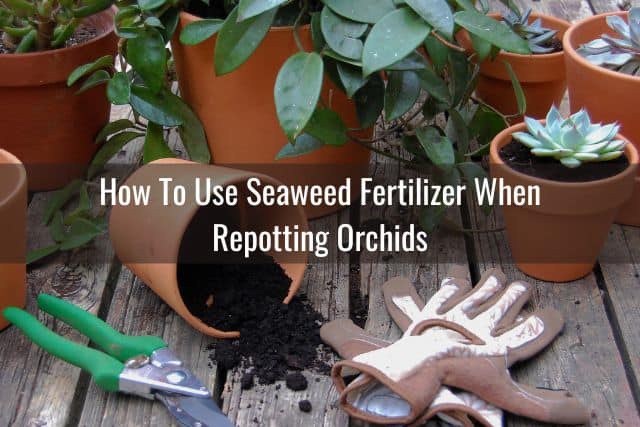
Repotting your orchids is prime time for examining roots and pruning off any dried, dead or rotted roots. It is also prime time for using a seaweed fertilizer such as Orchid Love.
One of the biggest seaweed fertilizer benefits is that it will help your orchid quickly put out new roots and get established in the new potting media.
To use seaweed fertilizer during repotting, prepare a small bucket of seaweed fertilizer solution. After pruning off all the dead roots and cleaning off the old potting media, soak your orchid’s remaining root system in a small bucket or basin of seaweed fertilizer solution. Allow it to soak for 5-20 minutes.
You can soak your orchid’s roots while you’re preparing the orchid bark and pots. Soaking the roots in a seaweed or kelp fertilizer solution is a great alternative to soaking the roots in plain water.
Remember, seaweed and kelp fertilizers contain auxin, a rooting hormone. It will give your orchid roots a boost and jump start their growth.
This can help get your orchid established in it’s new pot much more quickly. The added nutrients in the seaweed fertilizer will also support your orchid’s growth during this transition phase.
Seaweed And Kelp Fertilizer Benefits For Sick Orchids
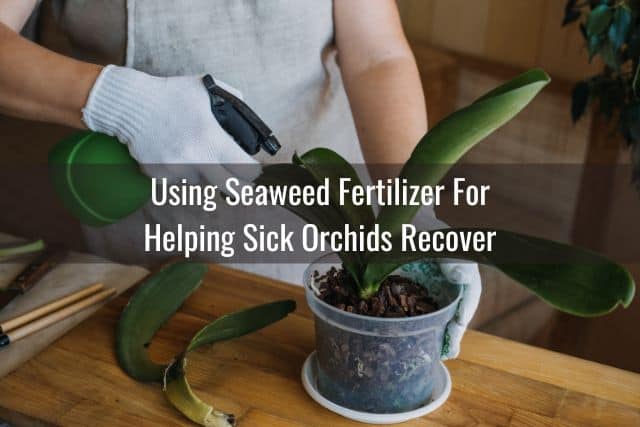
A regular orchid fertilizer, even when diluted, might stress a sick plant further and burn delicate new root growth. In many cases, it is recommended that you refrain from fertilizing a sick or stressed orchid. However, this is not the case with seaweed fertilizers.
You’ll find that seaweed and kelp fertilizers are gentler and can be well-absorbed by even weak, sickly plants. For nursing sick orchids back to health, you can use a diluted seaweed fertilizer to feed your orchids.
To feed a sick, weak, or recovering orchid, prepare a diluted mixture of seaweed fertilizer. Do this by preparing the seaweed fertilizer in water per the package instructions.
Then, dilute this mixture further in more water to create a half-strength or quarter-strength seaweed fertilizer. Feed your orchid with this every other week.
I like to combine feeding with watering, as it kills two birds with one stone. Let the orchid pots sit in the diluted seaweed fertilizer for at least 5 minutes. Then remove the pots from the basin and let the excess water drain away. To learn more, read about how to water orchids here.
You can also support your sick orchid by feeding it with seaweed fertilizer as a foliar spray. Simply spray the underside of the leaves with the diluted seaweed fertilizer.
Of course, if there are orchid pests on the undersides of the leaves, you will need to address that first.
How Much Is Too Much Fertilizer?
When fertilizing your plants, watch them carefully for signs of over-fertilization. Too much of anything, including fertilizer, can be harmful to plants, including orchids.
Too much seaweed or kelp fertilizer can lead to rapid growth of the orchid and not in a good way. You may see formation of basal keiki plants, deformed flowers or flower spikes, and weakened roots.
The presence of too much auxin can lead to a temporary shutting down of root growth, as it triggers the release of cytokinin.
Cytokinin, as you may remember, works in cell division and above-ground growth. Excess release of cytokinin can lead to more leaf growth, leading to a top-heavy plant with a weak root support.
Rapid growth does not always mean healthy growth. In fact, rapid growth can lead to unbalanced growth. Too much of a good thing is not always better.
For this reason, avoid using seaweed or kelp fertilizer on your orchids every week. Instead, space your supplemental feedings out to twice a month or once a month, depending on the orchid’s season of growth.
Final Thoughts
When using seaweed fertilizers, the key thing to remember is that these products are supplements and additives. Seaweed fertilizers are meant to be used in conjunction with your regular NPK fertilizers and are not stand-alone products.
Before using, you will need to follow the product instructions and dilute the seaweed fertilizer appropriately.
To avoid over-fertilization, apply seaweed fertilizer to your orchids and other plants every other week or once a month. During an orchid’s dormant phase, refrain from using seaweed fertilizer on your plants.
You’ll find that with proper application and use, seaweed and kelp fertilizer has a lot of benefits for your orchids and other plants. Among other things, seaweed and kelp fertilizers can supercharge your plants’ growth, accelerate root growth and nurse a sick orchid back to health.
If you enjoyed this article, please pin it and share!
